Lessons on the Land
Jennifer and Luis Hernandez are two tenacious ranchers who are serious life-long learners. The Oklahoma couple is on a mission to regenerate their land and expand their multifaceted, community-supported enterprises.
If you visit the Edmond Farmers Market north of Oklahoma City, you’ll likely hear Jennifer Hernandez’s laugh before you see her beaming smile and bright lipstick. Jennifer and her husband, Luis, own and operate 3J Farms OK, a diversified farm in Blanchard, Oklahoma.
Retail-marketing their beef at a couple of farmer’s markets is just one of the ways the Hernandezes are re-shaping the story of the former dairy farm where Jennifer grew up.
As they took over managing the land, the couple discovered the principles of regenerative ranching were the right fit for their farm and sought out educational opportunities anywhere they could. At first, they had to drive hundreds of miles to attend regenerative-based field days and classroom-based workshops. In 2023, however, they discovered Noble Research Institute’s regenerative ranching courses and jumped at the chance to learn with an organization in their proverbial backyard.
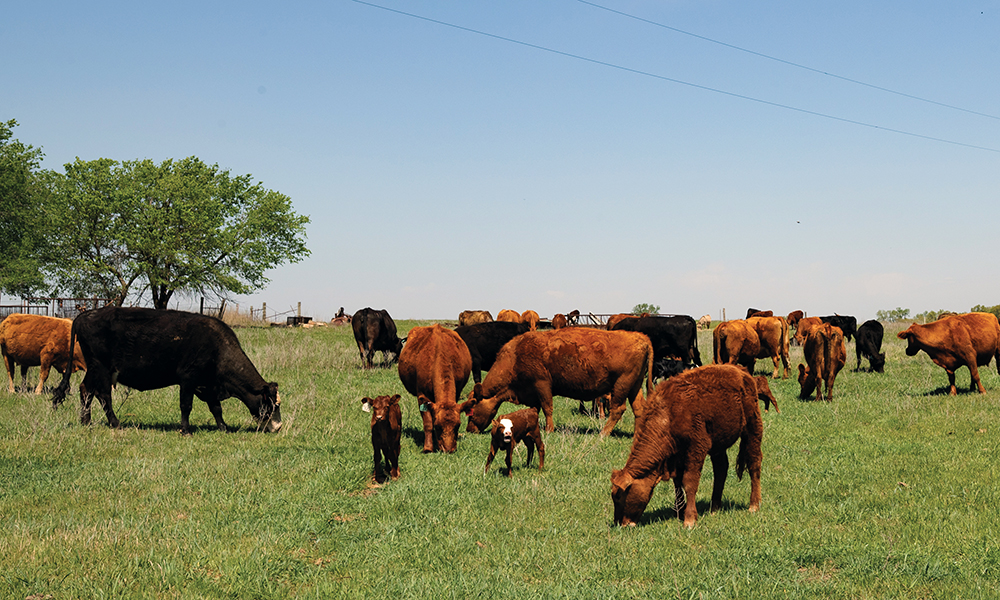
Returning Home, and a Sad Setback
Starting a family was the catalyst that began Jennifer and Luis’ journey to farming. Jennifer’s mother, who at the time still managed some beef cattle and lived on the family farm, was eager to have her grandchildren nearby, and the Hernandezes felt called back to the open space of Jennifer’s hometown.
“My mom wanted her grandbaby to be raised on the farm,” says Jennifer, who was already considering a move back to Oklahoma from the Texas panhandle. “So back to the farm we went, and we’ve been there ever since pretty much.”
At first, Jennifer and Luis both worked full-time “town” jobs, helping Jennifer’s mother on the farm as needed. It wasn’t long, however, before Jennifer and her siblings, Jillian and Jesse Estes, were brainstorming how they could create a more sustainable farm – and living – from their family land.
Plans stopped short with the sudden death of Jennifer and Jillian’s brother, Jesse.
“That sent us into a tailspin,” recalls Jennifer of her family’s immense grief. “Death changes people, and you don’t know what you’re going to do, or how you’re going to do it or even how to move forward.”
It took time to heal, and eventually that terrible loss became a meaningful spark that brought forward the first iteration of 3J Farms OK.
“When my brother left us, he left behind his girlfriend, Traci, and his business partner, David. They came into our lives and never left – they brought different skills and ideas to the farm.”
Those skills brought about an idea for an on-farm business. The family sought out a way to kick-start a greenhouse business. Jennifer and Traci toured a couple of greenhouse operations and found out one of them was for sale. With the help of their team, three greenhouses were de-constructed, moved and rebuilt on 3J Farms OK land.
Greenhouses bring good seasonal revenue, but they don’t require much land. The family had to decide how they would use the remainder of their land. That’s where Luis stepped in.
“Luis has always been interested in cattle and spent time in Oklahoma doing different things with cattle, and we thought, ‘that’s going to be our farming future,’” says Jennifer.
After years of using the land to dry-lot dairy cattle, the soil had become compacted, and the topsoil had washed into the flood-control lake on the farm. Luis knew he needed to know more about the best ways to restore the land using the farm’s limited resources.
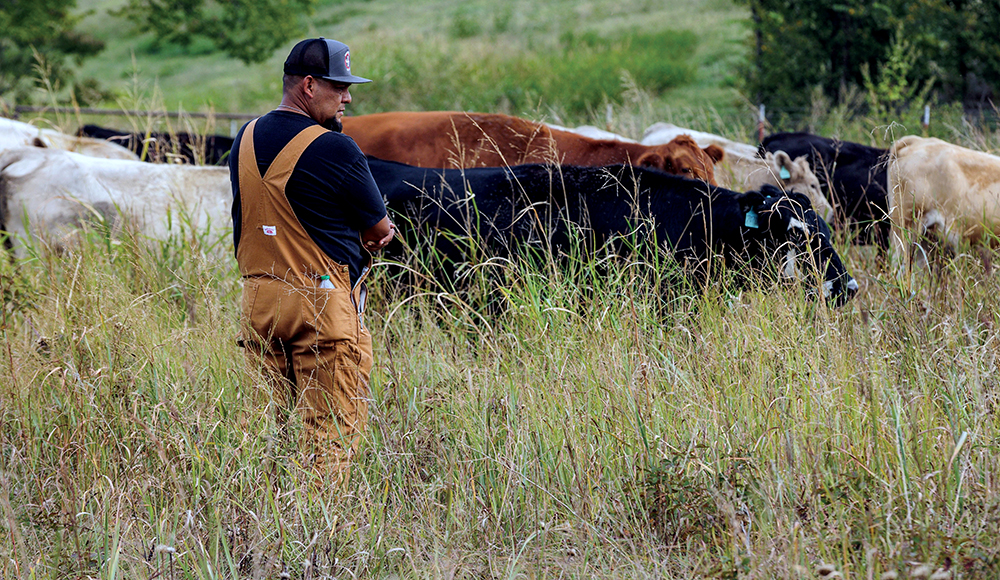
Quest for Knowledge
When Luis started managing the cattle on 3J Farms OK, he armed himself with online resources from popular names in the regenerative space – Joel Salatin, Greg Judy and Gabe Brown, to name a few. With limited options for regenerative education close to him, Luis often traveled to other states for in-person workshops, farm tours and the like.
“We spent a lot of time going across the U.S. to look at different ranching operations and how they work,” says Jennifer. “We studied others, but a lot of times we found they don’t have the same grasses or soil that we do in our area, so some of the things aren’t exactly the same.”
Even though the bermudagrass-heavy pastures of 3J Farms OK didn’t look like some of the ones Luis toured, he was able to glean some sound management principles and practices to tweak and apply at home. Neither Jennifer nor Luis believe they’ll ever know it all about regenerative ranching. So, when they found an opportunity to work with regenerative ranching educators at Noble just a couple hours from their farm, they didn’t waste time.
Luis attended Noble’s first-ever Noble Grazing Essentials course in the fall of 2023. The foundational course was a good refresher for Luis, who had been practicing regenerative management since 2018 on the farm.
“It helped me refine our head count, how many cows we’re carrying and what’s going to be profitable for us,” says Luis. Attending Noble Grazing Essentials and seeing a working example of the impact of grazing 1 million pounds of livestock per acre on the land inspired him to try such intense grazing at home.
“We did that at the farm this past fall, and it seems like it’s going to work out in our favor,” smiles Luis. “The things that I was scared to try before, this course gave me the confidence to try it on our place.” Luis values hands-on experience over classroom learning and emphasizes that making mistakes is part of the learning process in grazing management.
While Luis is past the five-year hurdle many regenerative practitioners say the land and manager must endure to fully realize the benefits, he enjoyed sharing his experiences with fellow course participants.
“I wish I would have written down every mistake I made, because I could write a book on it,” quips Luis.
Learning as they go has been the hallmark of all ventures on 3J Farms OK. Applying the previous day’s lessons is part of what got the modern iteration of their business started during the COVID-19 pandemic and what keeps it growing today.
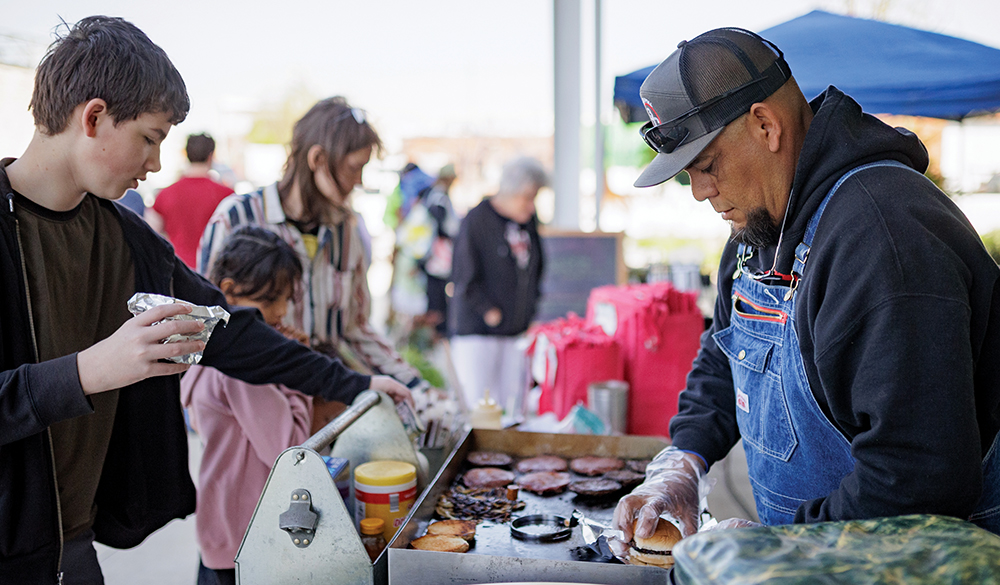
Growing the Business
Jennifer attributes 3J Farms OK’s early success to their ability to pivot nimbly to what the market needed during the COVID era. The greenhouses they invested in became the lifeblood of a community of people hungry for something to pass their time and the opportunity to grow their own food.
Jennifer isn’t afraid to try and fail. “If I don’t feel like it’s the right way, I’ll turn around and go another way,” says Jennifer. “When COVID happened, it was a good springboard to do anything we wanted, and it was all relatively successful because folks were looking for things to do.”
3J Farms OK hosted outdoor operas, murder mystery dinners and a weekly farmers market in their oversized hay storage barn. Eventually, two grain bins were converted into a farm store, then into two Airbnb spaces to host guests on the farm.
The business degree Jennifer earned was becoming more useful on the farm than she felt it had anywhere else. She was in her element both in terms of connecting with her community and growing her family’s business.
“As farmers, we often think that we can do anything and everything all at one time,” says Jennifer. “While we can do anything, and we can do lots of things, we cannot do it all at one time.”
By the fall of 2024, it was Jennifer’s turn to attend an educational course with Noble. She received a National Cattlemen’s Beef Association Rancher Resilience Grant to attend a Noble Profitability Essentials course. She was looking for something to complement her business degree and fill in the gaps she felt were limiting the farm’s future.
“Those were the details of information that I always wanted to get, I just didn’t know how to get them, and seeing that process helped me a lot,” Jennifer says of the course curriculum that demonstrates the importance of creating comprehensive profit and loss and cash flow statements. “Now, have I done that exactly myself? No. I did some of that, but I hired somebody that is helping me and training me more on how to do that.”
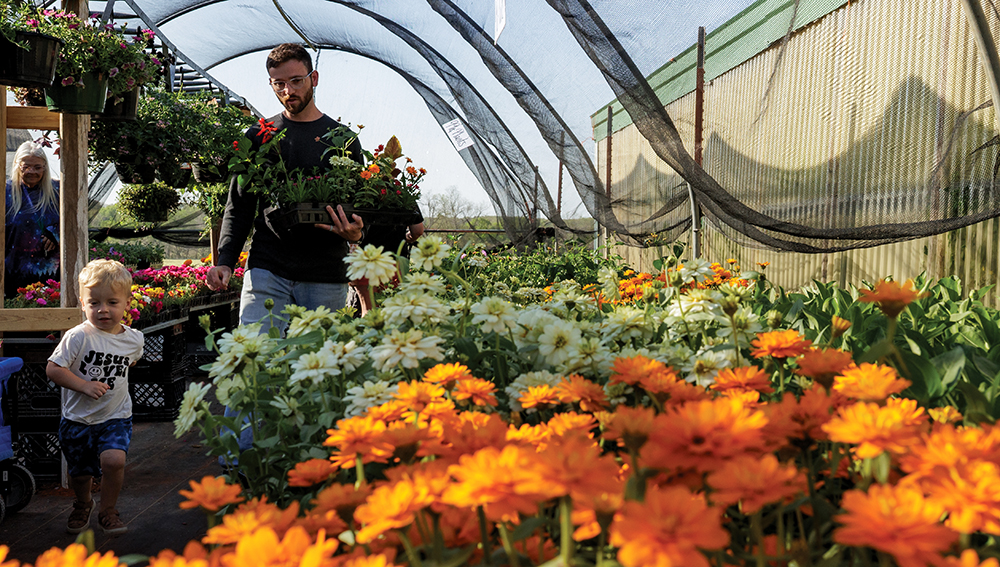
Educational Steppingstones
The Hernandezes are always looking for educational steppingstones, as Jennifer calls them: small lessons they can apply to their farm to improve outcomes, reduce workload or increase profits. For Luis, hands-on learning is most valuable – actually getting to see the outcomes on other ranches inspires confidence to try novel approaches at home.
Managing the business of the ranch led Jennifer to ask tough questions, dig up answers and give herself permission to bring on support where she needed it. As usual with Jennifer, answers to her questions led to a deeper interest in learning and growth.
With nearly a decade of regenerative management and business success behind them, the couple can take a breath and consider the future of their farm. They say they’re eager to add sheep as an enterprise to diversify their revenue stream and add the soil health benefits of an added species on the land.
The future of their ranch is still a half-written story. As they decide what shape the second half of the book takes, you can be sure when they encounter questions, they’ll seek out answers from trusted resources.
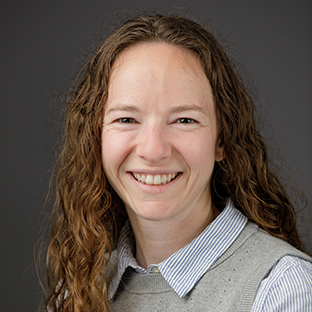
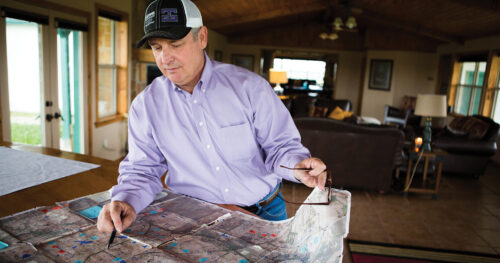

Comment